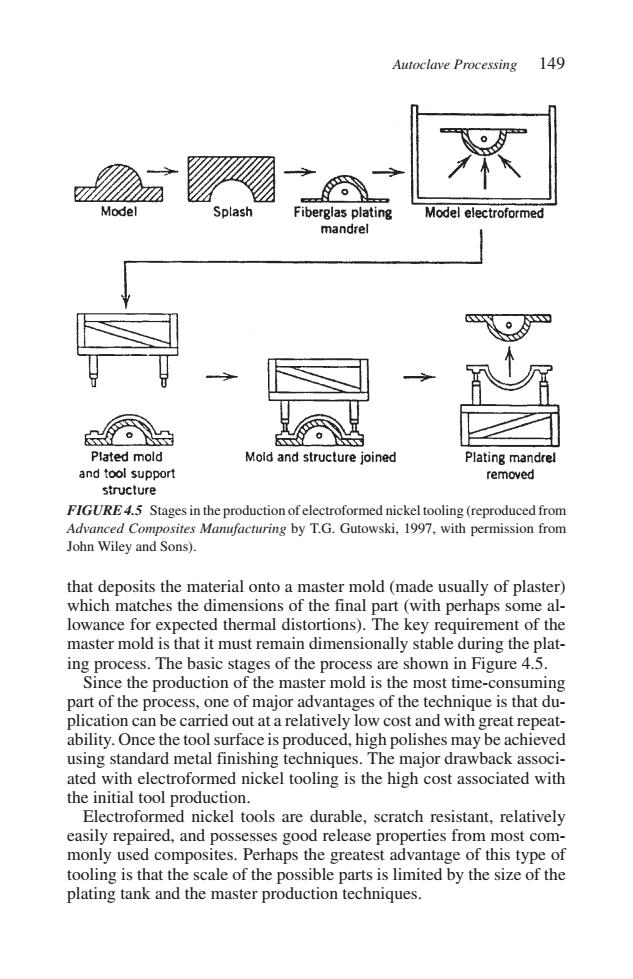正在加载图片...

Autoclave Processing 149 Model Splash Fiberglas plating Model electroformed mandrel Plated mold Mold and structure joined Plating mandrel and tool support removed structure FIGURE 4.5 Stages in the production of electroformed nickel tooling (reproduced from Advanced Composites Manufacturing by T.G.Gutowski,1997,with permission from John Wiley and Sons). that deposits the material onto a master mold(made usually of plaster) which matches the dimensions of the final part(with perhaps some al- lowance for expected thermal distortions).The key requirement of the master mold is that it must remain dimensionally stable during the plat- ing process.The basic stages of the process are shown in Figure 4.5. Since the production of the master mold is the most time-consuming part of the process,one of major advantages of the technique is that du- plication can be carried out at a relatively low cost and with great repeat- ability.Once the tool surface is produced,high polishes may be achieved using standard metal finishing techniques.The major drawback associ- ated with electroformed nickel tooling is the high cost associated with the initial tool production. Electroformed nickel tools are durable,scratch resistant,relatively easily repaired,and possesses good release properties from most com- monly used composites.Perhaps the greatest advantage of this type of tooling is that the scale of the possible parts is limited by the size of the plating tank and the master production techniques.that deposits the material onto a master mold (made usually of plaster) which matches the dimensions of the final part (with perhaps some allowance for expected thermal distortions). The key requirement of the master mold is that it must remain dimensionally stable during the plating process. The basic stages of the process are shown in Figure 4.5. Since the production of the master mold is the most time-consuming part of the process, one of major advantages of the technique is that duplication can be carried out at a relatively low cost and with great repeatability. Once the tool surface is produced, high polishes may be achieved using standard metal finishing techniques. The major drawback associated with electroformed nickel tooling is the high cost associated with the initial tool production. Electroformed nickel tools are durable, scratch resistant, relatively easily repaired, and possesses good release properties from most commonly used composites. Perhaps the greatest advantage of this type of tooling is that the scale of the possible parts is limited by the size of the plating tank and the master production techniques. Autoclave Processing 149 FIGURE 4.5 Stages in the production of electroformed nickel tooling (reproduced from Advanced Composites Manufacturing by T.G. Gutowski, 1997, with permission from John Wiley and Sons)